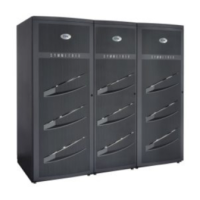294
EMC Symmetrix DMX-3 Product Guide
Planning and Installation
Customer must be aware that the load-bearing capacity of the
data center floor is not readily ascertainable through a visual
inspection of the floor and that the only definitive way to
ensure that the floor is capable of supporting the load
associated with the Symmetrix DMX-3 storage system is to
have a certified architect or the data center design consultant
inspect the specifications of the floor to ensure that the floor
is capable of supporting the loads specified in Table 42 on
page 265. Customer is responsible for insuring that the floor of
the data center on which the Symmetric DMX-3 System is to
be configured is capable of supporting these loads when the
system is configured directly on the data center floor.
Failure to comply with these requirements could result in
severe damage to the Symmetrix DMX-3 system, the raised
floor, the subfloor and the surrounding infrastructure.
NOTWITHSTANDING ANYTHING TO THE CONTRARY IN
ANY AGREEMENT BETWEEN EMC AND CUSTOMER,
EMC FULLY DISCLAIMS ALL LIABILITY FOR DAMAGE
RESULTING FROM CUSTOMER’S NONCOMPLIANCE
WITH THE ABOVE FLOOR LOAD-BEARING
REQUIREMENTS AND CUSTOMER ASSUMES ALL RISK
ASSOCIATED WITH SUCH NONCOMPLIANCE.
Overhead host
cable routing
When installing a Symmetrix DMX-3 system configuration, the
cabling is handled from the overhead when installing on a nonraised
floor or in some instances on a raised floor. To assist in the
management of overhead host cable routing, a topside cable routing
bracket (Model # DMX3-CBL BRKT), must be purchased and
installed at the rear of the equipment bay.
Overhead power
cable routing
If the customer requires power to be supplied from overhead then
EMC recommends the power cables be dropped on the outside of the
cabinet next to the hinge side of the doors and routed inside the
machine.

